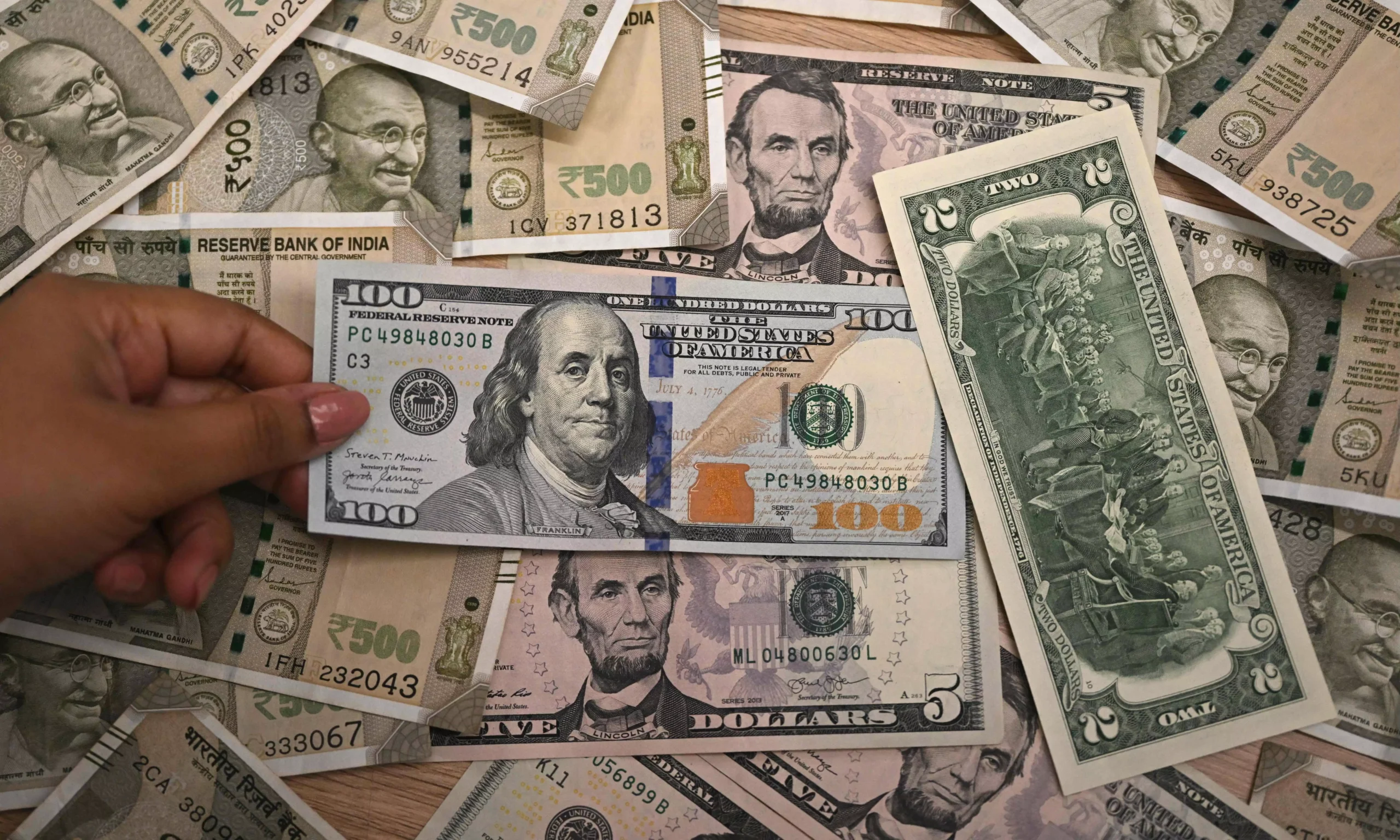Rupee vs U.S. Dollar: The Indian rupee opened with a slight recovery on Friday, September 5, 2025, gaining 1 paisa to settle at 88.11 against the U.S. dollar in early trade. The rebound comes after the domestic currency had touched its record low earlier this week, driven by sustained foreign outflows and global macroeconomic pressures.
Market analysts attribute the rupee’s uptick to a combination of factors, including a weaker U.S. dollar index, easing crude oil prices, and renewed positive sentiment in Indian equity markets. Investors expect the momentum to remain volatile in the short term, as global risk appetite continues to fluctuate ahead of key U.S. economic data releases.
Despite the marginal recovery, experts caution that the rupee’s overall outlook remains fragile, as persistent concerns over India’s trade deficit, foreign institutional investor (FII) outflows, and geopolitical tensions could weigh on the currency.
Factors Behind Rupee’s Recovery
1. Weaker U.S. Dollar
The dollar index (DXY), which tracks the greenback’s performance against a basket of major currencies, slipped in overnight trade, providing breathing room for emerging market currencies, including the rupee.
2. Drop in Global Crude Oil Prices
Brent crude futures dipped amid concerns of weaker global demand and rising supply, directly benefiting India, the world’s third-largest oil importer. Lower crude prices help ease import bills and reduce pressure on the rupee.
3. Domestic Equity Market Support
Indian stock indices — the Sensex and Nifty — opened on a positive note, improving investor confidence and supporting currency inflows. The strong performance of domestic equities often encourages foreign investment, which in turn boosts the rupee.
Read about: Financial Crime Watchdog FATF Calls for Transparency on Shell Companies
Recent Rupee Performance
- Earlier this week, the rupee hit a lifetime low of 88.25 per dollar, pressured by rising U.S. Treasury yields and heavy demand for dollars from oil importers.
- The Reserve Bank of India (RBI) has been actively monitoring forex market fluctuations, with market participants watching closely for any possible interventions.
- Foreign institutional investors have remained cautious, with consistent equity outflows in recent sessions adding pressure on the rupee.

Expert Views
Currency market experts suggest that while today’s gain is a technical rebound, the rupee could continue to face challenges unless there is:
- A sharper decline in the U.S. dollar index.
- Sustained moderation in crude oil prices.
- Renewed foreign inflows into domestic equity and debt markets.
The short-term trading range for the rupee is expected to be 88.00–88.40 per dollar, according to forex dealers.
Conclusion
The rupee’s marginal rise to 88.11 per dollar signals a short-term relief rally, backed by weaker crude oil prices and equity market strength. However, given its recent record low, the domestic currency remains highly vulnerable to global and domestic headwinds.
For policymakers, ensuring stability in the currency market will be critical, especially as India approaches the festive season, when import demand typically rises. Investors and traders are likely to remain cautious, closely tracking U.S. economic indicators, global energy prices, and RBI’s stance on managing volatility.
The rupee’s path ahead will be determined by a delicate balance of global macroeconomic trends and domestic fundamentals. While today’s recovery is encouraging, the risks on the horizon mean volatility is far from over.
Also read: RUF Rodeo: The Wild 610bhp Off-Road Supercar That’s Equally at Home on Dirt and Tarmac
FAQs on Rupee vs U.S. Dollar
1. What is the current rupee to U.S. dollar exchange rate?
As of September 5, 2025, the Indian rupee is trading at 88.11 per U.S. dollar in early trade, marking a 1 paisa gain from the previous close.
2. Why did the rupee recover today?
The rupee gained primarily due to a weaker U.S. dollar index, falling global crude oil prices, and strong performance in Indian equity markets, which improved overall investor sentiment.
3. What caused the rupee to hit a record low earlier this week?
The rupee’s fall was triggered by rising U.S. bond yields, heavy dollar demand from oil importers, and sustained foreign portfolio outflows. These factors collectively pressured the domestic currency.
4. How do crude oil prices affect the rupee?
India is a major crude oil importer. When oil prices rise, India’s import bill increases, widening the trade deficit and putting pressure on the rupee. Conversely, lower oil prices ease this burden and support the currency.
5. What is the outlook for the rupee in the coming weeks?
Experts predict the rupee will remain volatile, trading between 88.00 and 88.40 per dollar in the short term. The trajectory will depend on global economic data, foreign inflows, crude oil price movements, and RBI’s interventions.
👉 Would you like me to also create a short SEO title & meta description (under 160 characters) for this article so it’s ready for publishing on Google News?
